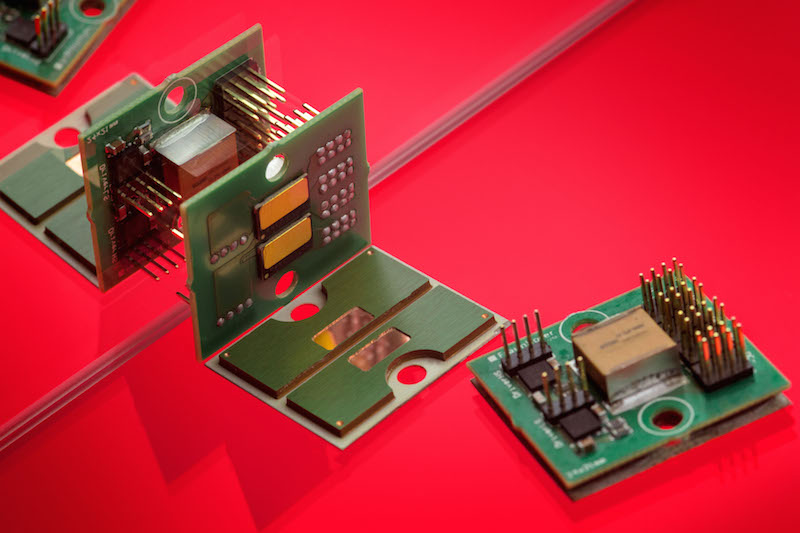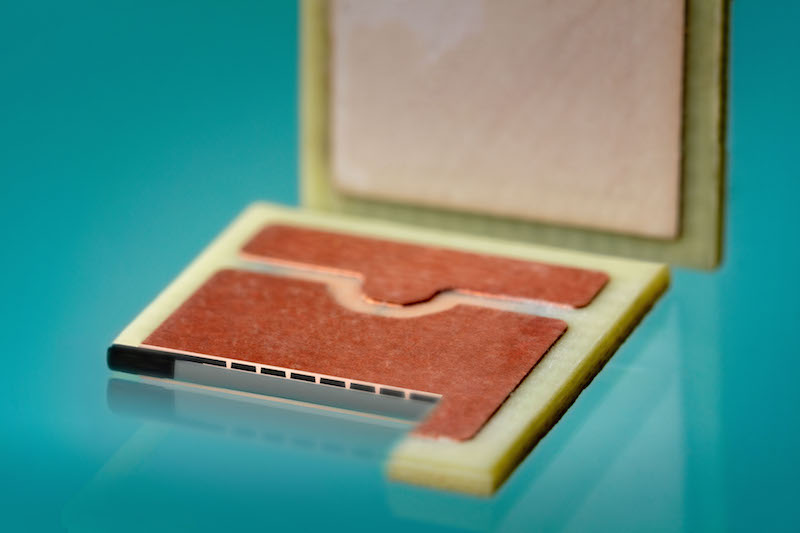Fraunhofer IZM eliminates the speed limit for power electronic switching
For power electronics, Wide Band Gap (WBG) semiconductors offer significant benefits compared to the state of the art: higher efficiency can be achieved due to lower switching losses, higher switching frequencies reduce the size of passive components, and less cooling is needed. However, packaging SiC or GaN in conventional modules and packages makes it impossible to take advantage of these benefits, as the parasitic effects, such as DC link inductance or parasitic capacitance to heat sink, lead to ringing, EMI and parasitic switch-on.
Therefore power modules are needed that combine optimized parasitic electromagnetic properties and high temperature capability with the potential for a high degree of integration. Fraunhofer IZM presents four new module technology demonstrators designed to tackle these challenges:
- The Printed Circuit Mold Module
A double layer ceramic substrate molded module with structured mold metallization for assembly with SMD components. The module shows perfect switching performance at the highest possible switching speed without ringing. This was achieved by lowest inductance design and integrating the necessary peripheral devices extremely close to the chips - The Full Ceramic Module
A full ceramic power module setup for temperatures of 200°C and beyond, also offering the possibility to assemble SMD onto the module. This module is manufactured by sintering a LTCC substrate onto the top side of the chips and additionally using it for peripheral devices - The Full PCB Module
A full polymer PCB style module with high temperature material (175°C) and low thermal resistance due to thick copper heat spreading. With this module, the set-up for ceramics and the ensuing costs are avoided while keeping the superior electromagnetic properties of both the modules described above. Furthermore, this technology offers the possibility of integrating power module and PCB as one component - The PCB on Ceramic Module
A PCB on ceramic module with four SiC chips in parallel. This technology combines the best of both worlds: the superior performance of ceramic substrates and the integration capabilities of printed circuit board technology
 Fraunhofer Institute for Reliability and Microintegration IZM
Fraunhofer Institute for Reliability and Microintegration IZM
